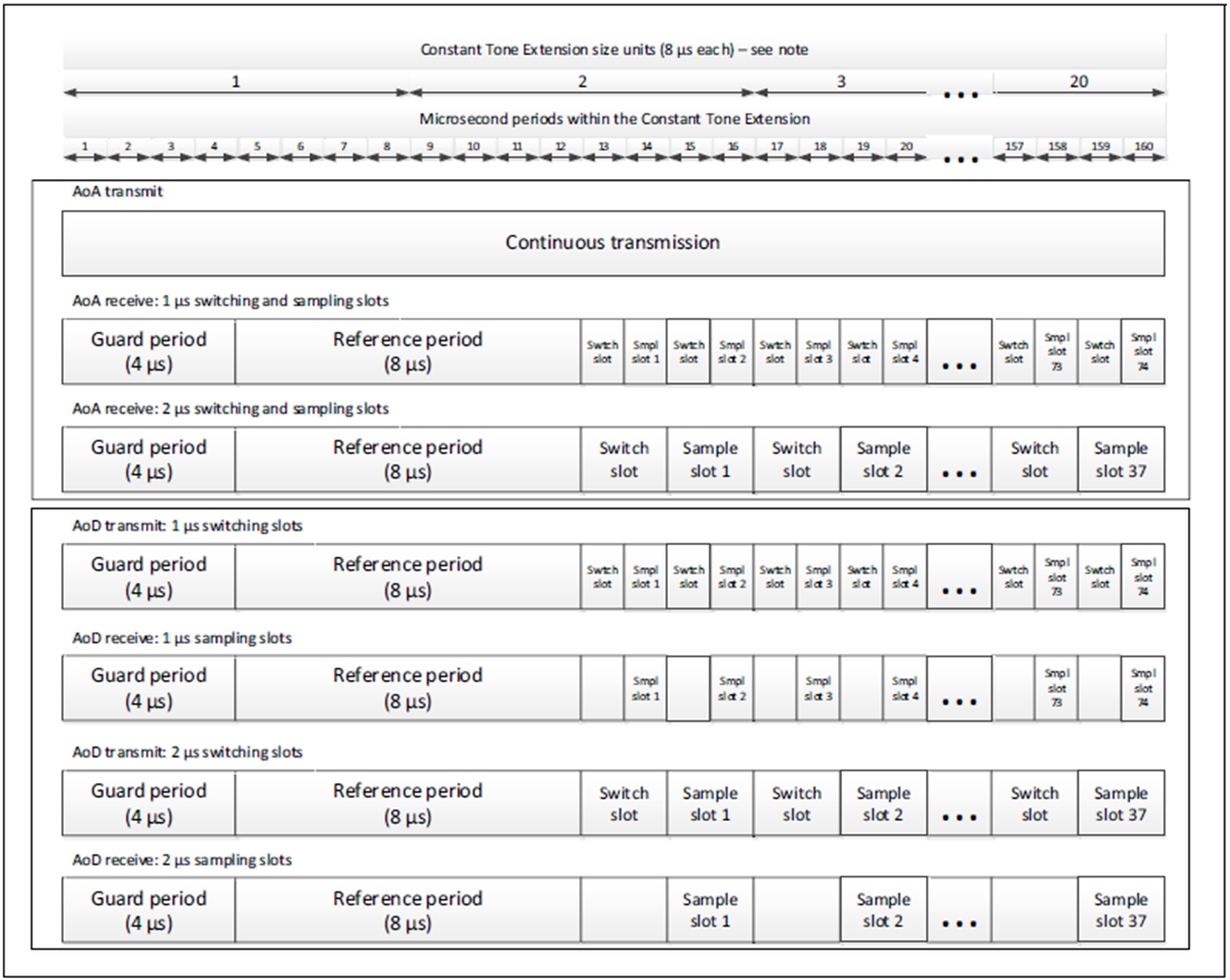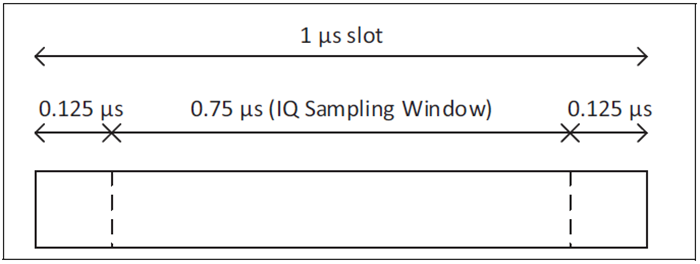TIDA029A july 2019 – june 2023 CC2640R2F-Q1 , CC2642R , CC2642R-Q1
- 1
- Bluetooth Angle of Arrival (AoA) Antenna Design
- Trademarks
- 1Introduction
- 2Angle of Arrival Antenna Design Considerations
- 3Dipole Antenna Array
- 4Calculating AoA From IQ Measurements
- 5References
- 6Revision History
2.2 RF Switch Considerations
RF switch characteristics that matter the most in an AoA application are the switching time, channel isolation, and number of channels. Switching time is important because the Bluetooth 5.1 specification requires 2-µs switch slots with the option of supporting quicker 1-µs switch slots.
 Figure 2-4 Constant Tone Extension
Structure Bluetooth Specification v5.1
Figure 2-4 Constant Tone Extension
Structure Bluetooth Specification v5.1
Therefore, the RF switch must be able to switch and settle within the specified switch slot time (whether 2 µs or 1 µs). It is important to note that IQ sampling begins 0.125 µs into a 1-µs slot and 1.125 µs into a 2-µs slot and ends 0.875 µs into a 1-µs slot and 1.875 µs into a 2-µs slot.
 Figure 2-5 IQ Sampling Window for 2-µs
Sample Slots
Figure 2-5 IQ Sampling Window for 2-µs
Sample Slots Figure 2-6 IQ Sampling Window for 1-µs
Sample Slots
Figure 2-6 IQ Sampling Window for 1-µs
Sample SlotsChannel isolation is also an important specification because it directly affects the efficiency of the system. The better the isolation between the RF channels, the better the overall efficiency of the RF system. Lastly, the number of channels is important as it plays a large factor in switch cost. Table 2-1 shows several viable RF switches, most of which have been implemented on TI angle of arrival printed circuit boards (PCB).
| Part Name | Manufacturer | Switch Type |
Frequency Range (GHz) |
Max 50% Control to 90/10% RF (ns) |
Typical Isolation (dB) |
Typical Insertion Loss (dB) |
Automotive Qualification |
|---|---|---|---|---|---|---|---|
| SKY13408-465LF | Skyworks® Solutions, Inc. | SP3T | 1–6 | 150 | 28 | 0.8 | N/A |
| SKY13323-378LF | Skyworks Solutions, Inc. | SPDT | 0.1–3 | 100 | 27 | 0.35 | N/A |
| SKYA21001 | Skyworks Solutions, Inc. | SPDT | 0.2–3 | 250 | 23 | 0.4 | AEC-Q100 |
| RFSW8006QTR7 | Qorvo | SP3T | 0.1–4 | 500 | 25–31 | 0.6 | AEC-Q100 |